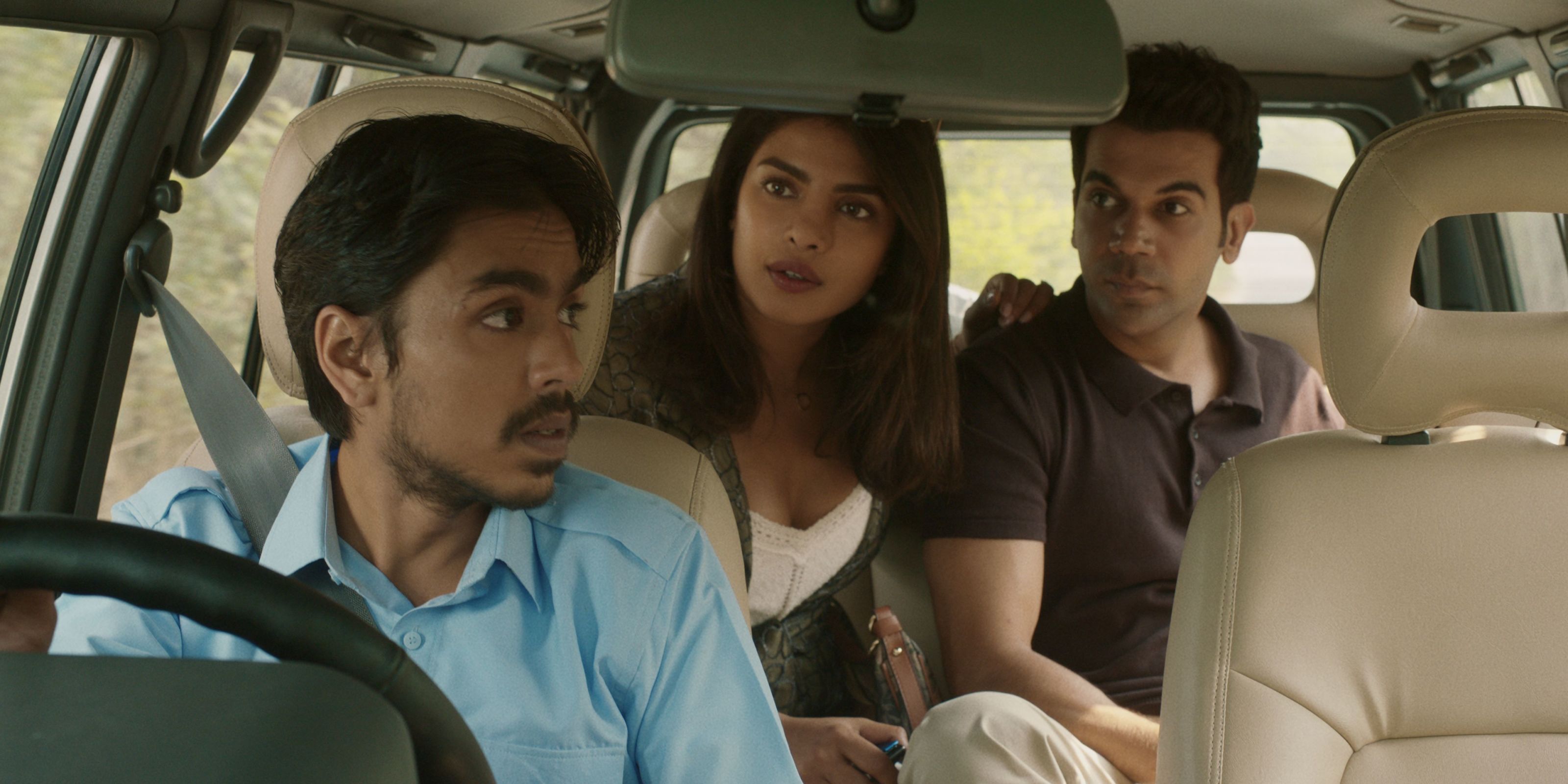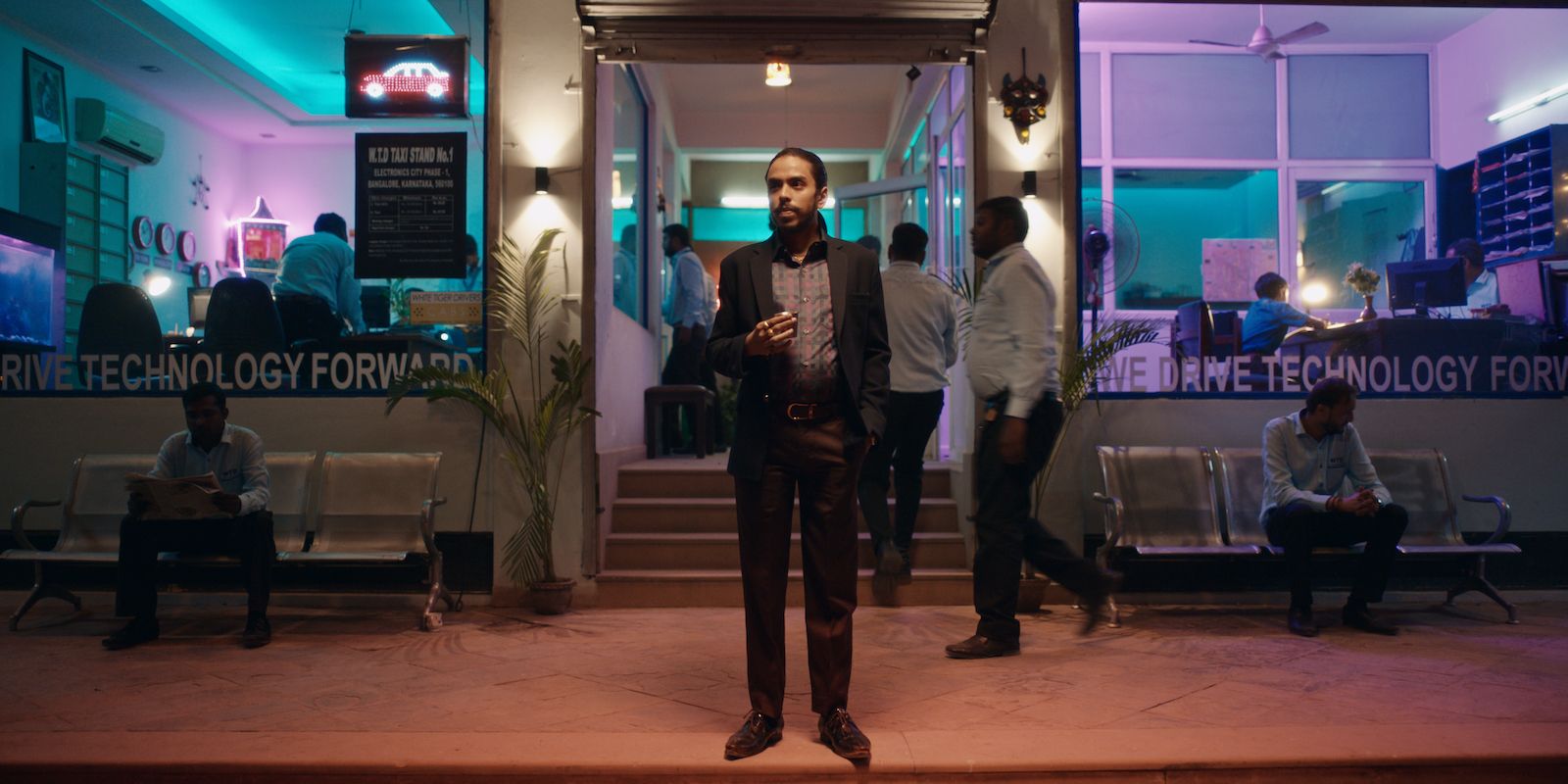
WARNING: The following contains spoilers for The White Tiger, which is available now on Netflix.
Bollywood films certainly have an... interesting reputation, both in India and around the world. Known for their colorful set pieces, as well as their boisterous song and dance numbers, Bollywood movies in particular are seen in a rather cartoonish light. That is definitely not the case with the film adaptation of Aravind Adiga's The White Tiger.
The Netflix film tells the story of a lowly Indian driver's rather morose rise to entrepreneurial enterprise, replicating the success of its source material and becoming another worthy addition to the streaming service's international catalogue. It does this by not only giving an accurate look at modern Indian society, but by going in completely opposite directions of notable Bollywood tropes. Though Netflix, Hulu, Amazon Prime Video and other streaming services offer many Indian and other foreign films, perhaps none break the genre mold like this one.

The film, even more so than the book it is based on, dives deep into the world of modern India in ways that Western viewers might be unfamiliar with. The ramifications of the supposedly inert caste system are felt throughout the movie, with protagonist Balram being seemingly condemned to a life of poverty and servitude due to his family's status. His poor village is quietly ruled by essentially land barons, and even when he becomes a driver for Ashok, the village landlord's son, many of his life decisions are made for him by his grandmother.
These and other traditions are juxtaposed with Balram's narration that India is a country on the rise. For instance, Balram's life being controlled by his grandmother's desires parallels how Pinky tries and fails to get her husband Ashok to change his life's direction. Ironically, Pinky's wishes for Ashok are for the best, whereas Balram's grandmother's wishes would ultimately stifle her grandson's life. Pinky is also from America, and her general demeanor directly opposes how Ashok's family thinks a woman should act.
America and Westerners, namely Caucasians, though they aren't in the movie, are treated in a scornful light. Balram sees their rule of the world's culture as coming to an end, with various elements seen throughout the film fueling his belief that India and China will command the future. These and other elements all add up to a narrative that completely defies how a generic Indian movie, particularly a Bollywood movie, would play out.

This raw, unflinching and anything but overproduced vision of India is far more realistic than the sing-songy version presented in various Bollywood films. The brutality of life in a small village with few options is showcased in nearly every member of Balram's family. None of them are shown as being particularly happy with their lot in life, and this is only fueled further by the depressing grip that landlords like the Stork and others in his family have over how much money they can make.
Films such as the now iconic Slumdog Millionaire have also shown this tragic and unfair world in which the improper distribution of wealth runs rampant, but that film still clung to many Indian and Bollywood tropes. For one, it kept a love story as a central part of its plot, whereas The White Tiger has only a marriage that ultimately breaks down. That film was also, in the end, a sort of fairy tale with a cinematically happy ending involving a once in a lifetime chance to become rich. The White Tiger actually references the movie in its middle section, commenting on how its feelgood climax is utterly unrealistic.
Speaking of sing-songy, there are no musical numbers to be found in the film. While these elements are not as ubiquitous in Indian cinema as they're believed to be, it speaks to how much the film, for as quirky as it can sometimes be, never tries to shy away from realism. As mentioned, America and the West are not portrayed in a positive light. Despite this and the harsh reality of India on display, the movie is not necessarily anti-Indian, either. Indian religion is portrayed as both a folksy, confusing series of superstitions as well as a positive, life-changing belief system. The film is able to allow these things to speak for themselves, choosing multifaceted nuance over being pedantic or unable to make up its mind.
The characters are also incredibly nuanced themselves, especially Pinky and Ashok. They wax and wane between calling out their family's abuse of their servants and similarly taking advantage of Balram themselves. This explains Balram's somewhat undeserved reverence to them as well as his eventual violent ambition. The climax of the film showcases the corruption of India's police force and its elite, while also keeping Pinky and Ashok from becoming stock, cartoonish Bollywood villains.
The subversion of the film's ending is commented upon by Balram himself as he breaks the fourth wall, noting how, unlike in the typical tragic Bollywood murder story, he feels no regrets over what he's done. This blatant diversion from the country's typical cinematic fare cements the atypical societal story that The White Tiger tells as an interesting, if ultimately dark look into Indian society.
The White Tiger, written and directed by Ramin Bahrani and starring Adarsh Gourav, Rajkummar Rao and Priyanka Chopra Jonas, is in select theaters on Wednesday, Jan. 13 and will be available on Netflix on Friday, Jan. 22.
0 Comments